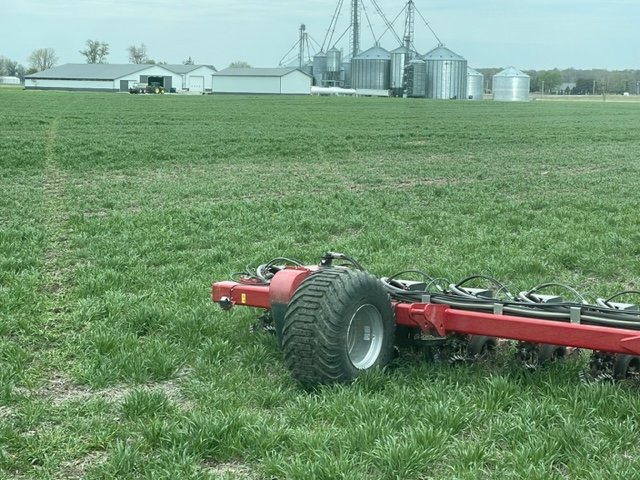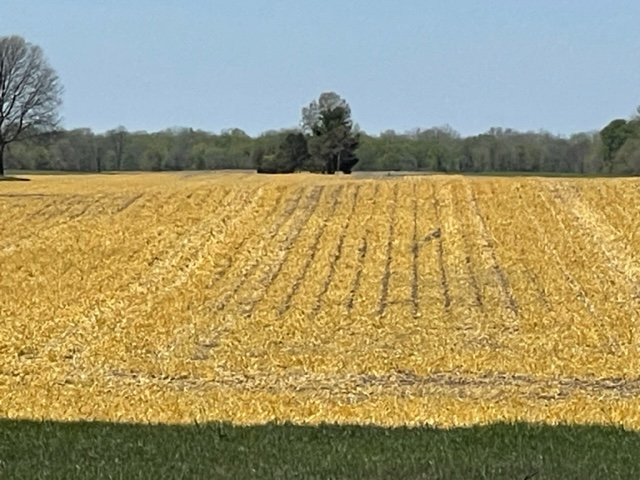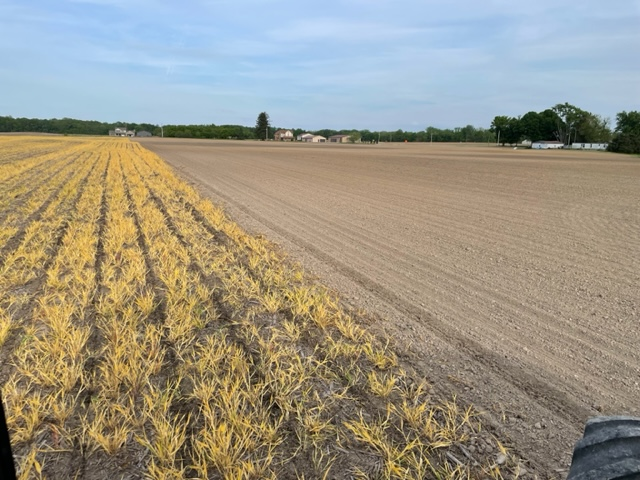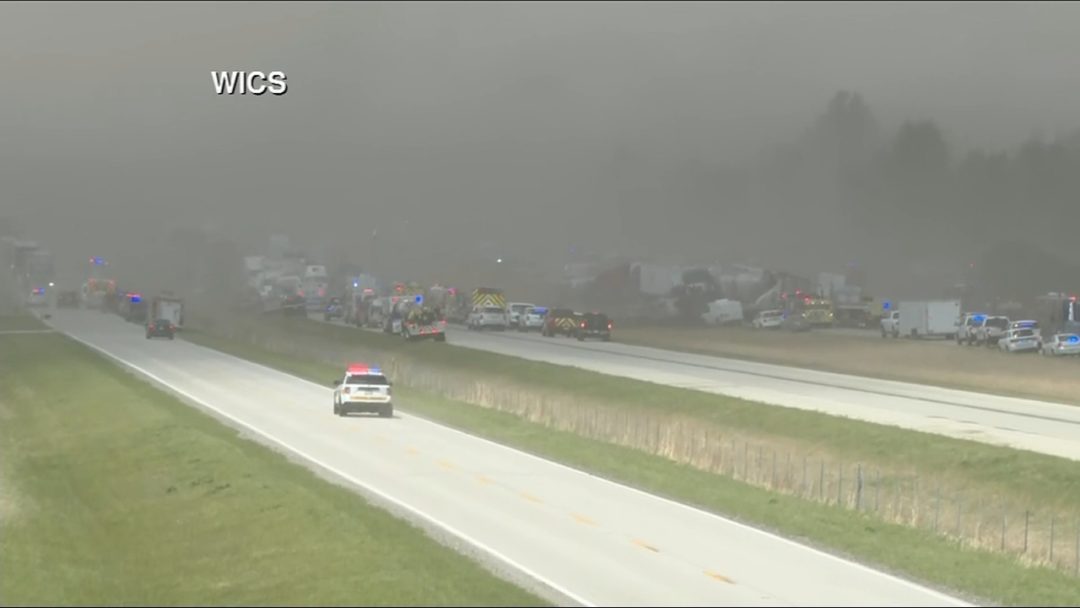On May 1st, a powerful dust storm led to a massive 70-car pile-up on Interstate 55 in central Illinois. The accident resulted in seven deaths and over 40 injuries. The dust storm was a result of high-speed winds blowing over freshly tilled fields. This incident begged the question: Could no-till and other conservation farming practices have prevented all of this?
An AgWeb article from John Phipps titled “The Surprising Solution to Prevent Deadly Dust Storms in the Future,” Phipps states that the solution isn’t minimal-till methods and is instead autonomous vehicles. Members of the No-Till Farmer email discussion group shared these thoughts about Phipps’ perspective:
Answer: I almost always agree with Phipps but not this time, at least not about his three points:
First, “no-till and cover crops are totally dependent on chemicals. No-till was barely known until glyphosate, for example. Consequently, while weeds continue to find ways to outwit herbicides, none have proven resistant to steel." Perhaps he could talk to Rick Clark? I see very few tillage farmers that do not use chemicals, too. We also have research showing the benefits of winter rye covers in suppressing weeds. Talk to Erin Silva.
Second, as outlined recently in Farm Journal; “Long-term no-till stratifies nutrients into the top inch of the soil. Roots need food farther down.'' Not if soil is healthy with lots of earthworms to stir the soil.
Third, “The economics of tillage choices is a moving target, affected by yield differences (an argument I will not join) and input costs. Right now, a $9 trip with a 30 year-old finisher beats a $50 herbicide" A gallon of Glyphosate cost me $36, and at a quart per acre, that is $9.
As far as the possibility of regulations or litigation, in Wisconsin one of the reasons soil health practices are being adopted is to avoid such legal problems. There are lots of better reasons, too.
–Dean Weichmann, Johnson Creek, Wis.
Answer: In the Red River valley of Manitoba (north of Grand Forks, ND), they burned cereal stubble black for years and years. Much of this area lies around the city of Winnipeg, which has a population around 700,000. For weeks at a time, the city would be clouded in smoke, air quality would plummet, breathing problems would be greatly exacerbated, and even highway driving could be dangerous. Eventually, the government passed straw/stubble burning restrictions where only certain areas could burn on certain days depending on wind direction. Very similar circumstances.
–Scott Mowbray, Mowbray Farms, Rolla, N.D.
Answer: Well, his dirt is getting lighter, while ours is getting darker, year after year. I like our long-term chances.
Since crop yields are totally dependent on organic matter, i.e. carbon, content of the soil, burning off the OM as tillage does, it is not a great plan for the future.
The dust was preventable, it killed, seems like a pretty easy legal case to me. Not to mention its impact on the lungs of all the citizens locked in their houses.

No dust planting into green barley.

You can see the clean seed trench. Corn is now about three leaves and dark green. Field actual production history using this system is greater than 225 Corn and greater than 68 Soy. But, like John says, it would yield more if we powdered it up.
That Farm Journal - Calmer stratification article is pure junk science. Pure Junk. Two acres of data across one year. Where are the tile lines, etc. Does water pond in that area? If it does, it kills normal nutrient leaching into the root zone, etc. Farm Journal should be ashamed.
My analysis reveals that if he plows (he said he would now chisel not plow-disconnect?) he will succeed in putting all the nutrients well below the majority of the root zone. Brilliant.
The whole thing was just junk science designed to get clicks. Sad really but most farmers just love to burn Carbon.
Another point to challenge John Phipps on is the use of chemicals. All, 100%, of my neighbors that till soil to powder are out spraying chemicals today. Some of those are adding Round-Up to the residual to kill the weeds that were indeed resistant to iron. As we were finishing up yesterday, I happened to be planting beside some fields that are managed a “different” way. Clearly different in erosion (wind, water, solar) potentials. For what it’s worth, the least talked about, but probably most damaging, is solar degradation of the carbon chains by exposing them to sunlight. For example, leave some plastic (plastic being a super long carbon chain) in the sun. This science is hard to understand.

–Ken Rulon, Rulon Enterprises, Arcadia, Ind.
Answer: The goal of every farmer for every field or grid should be to develop their soil to as close to "perfect" as is feasible. To be a "perfect" soil, the textbook definition is 50% solids and 50% pore space. For perfect growing conditions, 45% mineral soil, 5% organic matter, 25% air and 25% water with optimum to high levels of all plant nutrients in their proper relational ratios. Tillers do their operations to develop pore space or what some refer to as artificial pore space and to incorporate soil amendments throughout the topsoil.
No-tillers or never tillers strive to attain the "perfect soil" by not tilling and allowing the natural processes to develop the 50% solids and 50% pore space with soil structure improvement, residue management, cover crops and a host of aligned practices. No one tells us how important soil cation balance is to initializing and promoting soil structure, which is the only rapid path to the "perfect soil" for the never tiller (unless their soil is already "perfectly" cation balanced).
Nutrient balanced soil makes super soil structure possible. If soil fertility is out of alignment, it is very difficult to build the "house" to host the soil life that produces healthy soil. Getting the soil cations right makes life for the no-tiller and his soil so much more efficient and easier to "perfect.”
–H Grant Troop, Troop Farms, Oxford, Pa.
Answer: It's certain that Phipps has no real knowledge of farming no-till with a cover crop. If a cover crop and no-till practices would have been in place, this dust storm would not have happened!
While farming no-till with covers may use more chemicals, it's certainly less expensive per acre than tillage. The May No-Till Farmer newsletter had a short article stating that the no-till system is $50 per acre less. That's just talking about owning and running the equipment. Not talking about the soil loss and erosion effects on the soil. Plus the cover crop helps build the soil health. SO many benefits.
–Jake Kaderly, Kaderly Ag, Monticello, Wis.
Answer: These are pretty weak, hollow arguments Phipps is relying on. But Farm Journal seems rather eager to defend the status quo anytime there is an issue.
Most farmers, at least in a lot of the I states, will still put a pre-emerge herbicide down prior to planting and then incorporate it with tillage. That will be followed by at least one post-emerge pass. So that adds to the cost, not subtracts. Not to mention any tillage passes done the fall before. I have been told that in the area of the accident, some of the ground was worked as much as four times. Hardly cheaper than a glyphosate pass.
And despite what Farm Journal and Marion Calmer say, university research going back to 2015 indicates nutrient stratification is a non-factor. This is especially true on farms that use cover crops and a diverse rotation. I remember an AgPhD episode where literally the only people worrying about stratification were the Heftys and the equipment manufacturers. I bet Ken Ferrie would likely agree.
I would also like to see what trend data Phipps is using to say people are turning away from no-till. I’ve seen even more interest than ever in northern Iowa in reduced tillage. But I do agree that until there is a large-scale shift in government policies and incentives, we won’t see a big change in most farmers’ practices.
I’d love to know how many of those farmers are considering hooking up the rotary hoe now that the rain and heat is probably causing some crusting on their freshly tilled fields.
I’d also argue the expectation of poor visibility affects how folks react. I slow down in poor winter weather or heavy rain. But I am not expecting poor visibility on the interstate in May. I bet the drivers didn’t either.
Wind erosion acts a lot like an avalanche, increasing in severity as more sediment is churned up. Soil Health Labs just had a podcast episode that highlighted last year’s derecho in the Dakotas. That storm lasted 15 minutes and eroded 15 TONS of soil per acre in that time. The sky literally turned black in the matter of a minute. It was also in May during planting season. Researchers found the fields with cover were affected far less because the soil wasn’t able to create the avalanche-like conditions that create so much erosion.
I didn’t know what a derecho was when I was a kid. But it seems like we can count on one annually now. We can probably help everyone in our community by helping to reduce the risk of making these events more destructive.
–Josh Nelson, Cardinal Prairie Farms, Belmond, Iowa
Answer: Phipps seems to be pointing to the fact that tillage is a necessary evil. I do not believe this to be the case at all. He seems to be overlooking the fact that the topsoil and fertilizer blowing away has a cost that is hard to quantify, but the number for topsoil alone is nearly priceless. Once the topsoil is gone, good luck farming — period.
We are blessed with deep topsoils here to the point that (Illinois) farms seem to think erosion is non-existent. I've seen neighboring farms blow for 30 days after planting where you can't see down the road. The amount of soil lost would be in the semi loads, but spread out, it is hard to see. It is time that landowners are made to know of this sin and deadly potential outcome. I have seen fields that are 6 feet lower than the fence row due to erosion that was allowed to occur during conventional tillage.
Farmers want a system to work for 1 year, and if it doesn't they are quick to abandon it. No-till is a slow system that needs to allow nature to work and allow natural drainage channels to open up. NRCS has been trying to get more farmers to reduce tillage since the dust bowl area of 1935. However the progress has been slow on leading them to water. Unfortunately, it might be time for a different approach.
The responsibility should definitely lie with the farmer at some level. I do not believe we should have to use laws to make people use their heads. However, having no-tilled/strip-tilled since 1997, I find it completely ridiculous that farmers feel it necessary to buy and use tillage tools that leave soil in the state of powdered sugar. There is no reason for tillage to occur that makes soil so fine and susceptible to blowing. There are lots of minimum tillage tools that leave residue on the surface to protect the soil. Unfortunately, this will probably have to end up in courts for change to occur just like Chesapeake Bay fertilizer issues.
–Ryan Damery, Damery Family Farms, Mount Zion, Ill.
Answer: Well said, Ryan. We have used no-till for several years here, with many neighbors saying “it will never work.” But our yields have been progressively better. Located in west Pennsylvania in the foothills of the Appalachian mountains, our issue is not as much wind erosion (although ever-present) but rather water/washout erosion. Our fields are very hilly, some very steep in spots (you combine them first with an empty bin!), so any appreciable rainfall will wash away loose soil by the tons. It has historically been, with conventional till, to have field strips only 80 feet wide with deep furrows to attempt to trap the topsoil. Many of our fields still have these furrows and have yet to fill in, thanks to no-till. As you stated, if we lose our topsoil, we lose it all.
–John Beatty, JGB Enterprises, Butler, Pa.







Post a comment
Report Abusive Comment